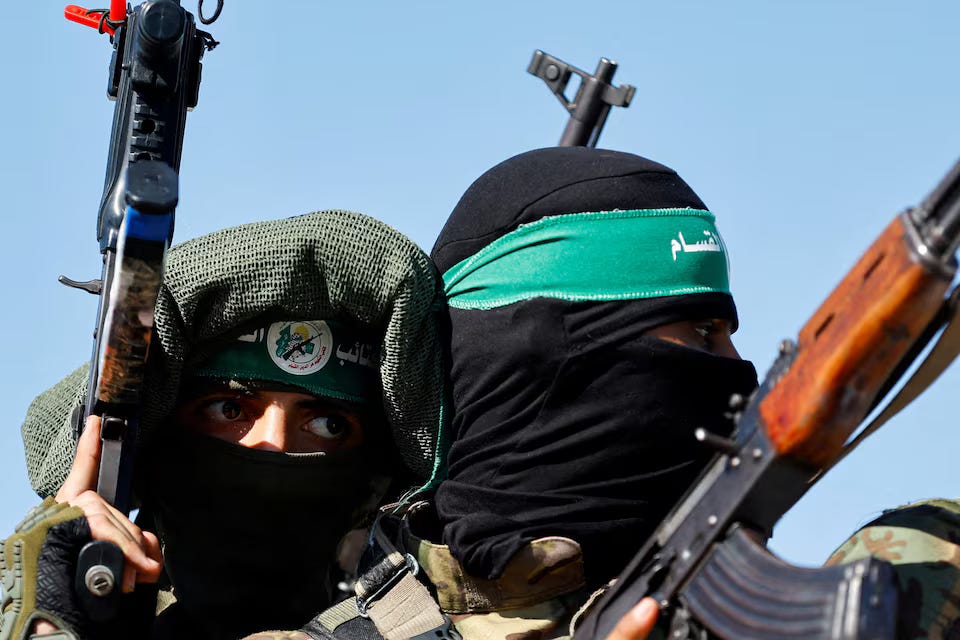Hamas Expands Ranks by Up to 15,000 Fighters Amid Ongoing Conflict, U.S. Intelligence Indicates
NEW YORK, Jan 24 (Reuters) – Hamas has bolstered its forces by recruiting between 10,000 and 15,000 new members since the onset of its conflict with Israel, according to two congressional sources familiar with U.S. intelligence reports. The data suggests that despite substantial losses, the Iran-backed group remains a significant threat to Israel.
The intelligence assessment indicates that Hamas has suffered similar losses during this period, the sources revealed. These latest U.S. estimates had not been previously disclosed.
Following a prolonged and devastating conflict, Hamas and Israel initiated a ceasefire on Sunday, bringing temporary respite to the war-torn Gaza Strip and easing tensions across the Middle East. However, sources briefed on intelligence updates—compiled in the final weeks of the Biden administration—suggest that while Hamas has managed to replenish its ranks, many new recruits are young and inexperienced, primarily tasked with basic security duties.
The U.S. Office of the Director of National Intelligence declined to comment.
Concerns Over a Prolonged Insurgency
On January 14, then-Secretary of State Antony Blinken noted that Hamas had managed to recruit nearly as many fighters as it had lost, warning that such a dynamic could lead to an "enduring insurgency and perpetual war." While Blinken did not elaborate on the intelligence findings, Israeli estimates suggest the total number of militant casualties in Gaza stands at approximately 20,000.
“Hamas militants regroup and re-emerge each time Israel withdraws from operations, as there is little else to fill the power vacuum,” Blinken said. Both Israel and the United States classify Hamas as a terrorist organization.
When asked for comment, a Hamas representative stated they were verifying details within the organization. In July, the group’s armed wing spokesman, Abu Ubaida, claimed that thousands of new recruits had joined their ranks.
Hamas’ Enduring Presence in Gaza
Despite Israel’s commitment to dismantling Hamas, the group remains deeply embedded in Gaza. In the days following the ceasefire, Hamas-led authorities moved swiftly to restore security and basic services in the devastated enclave, large portions of which have been reduced to rubble by Israeli military actions.
Since the war’s onset, U.S. officials have refrained from publicly estimating Hamas’ overall losses, only stating that the group has been significantly weakened.
Warnings of Continued Instability
U.S. officials have repeatedly cautioned about the long-term repercussions of the war, particularly since Hamas’ October 7, 2023, attack on Israel, which resulted in 1,200 deaths and over 250 hostages, based on Israeli figures. In response, Israel launched a military campaign that Palestinian health authorities report has killed over 46,000 people, though their figures do not distinguish between combatants and civilians.
Speaking at a congressional hearing in March 2024, then-Director of National Intelligence Avril Haines warned that the Gaza conflict would have a "generational impact on terrorism," fueling global violence by various extremist actors.
Due to restricted intelligence access within Gaza, estimating Hamas’ exact numbers remains challenging. However, official U.S. data suggests that before October 7, 2023, Hamas’ military wing had an estimated 20,000 to 25,000 fighters.
Future of the Conflict and Gaza’s Governance
When questioned about Blinken’s remarks, Israel’s U.N. Ambassador Danny Danon acknowledged Hamas’ recruitment efforts but downplayed their significance.
“We are aware that Hamas recruits young people,” Danon said. “But without proper weapons or training facilities, these recruits pose a limited threat. Incitement alone does not make them effective combatants.”
As part of the ceasefire agreement, Israeli forces have begun withdrawing from certain areas within Gaza. The second phase of the truce could lead to a permanent cessation of hostilities, though key terms remain under negotiation.
In his resignation speech on Tuesday, Israeli military chief Lieutenant General Herzi Halevi asserted that Hamas had been significantly weakened, with most of its senior commanders eliminated. However, he acknowledged that the group had not been entirely eradicated, and Israeli forces would continue efforts to dismantle its infrastructure.
One of the most contentious issues in future negotiations is the governance of postwar Gaza. Some Israeli officials insist Hamas cannot be allowed to remain in power, but the group has shown no signs of relinquishing control.
Newly inaugurated President Donald Trump’s national security adviser, Mike Waltz, stated on Sunday that Hamas would not be permitted to govern Gaza. He emphasized that if Hamas violated the ceasefire agreement, the U.S. would support Israel in taking decisive action.
For daily updates and in-depth analysis, sign up for the Reuters Daily Briefing.
Reporting by Erin Banco; Additional reporting by Nidal al-Mughrabi; Editing by Don Durfee and Howard Goller.


